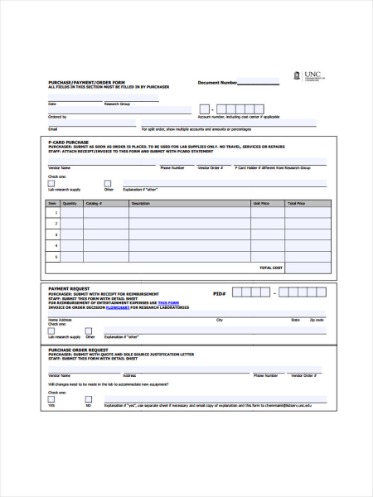These loans can also work for people who want flexibility and have the financial discipline to make periodic principal payments during the interest-only period. Interest-only loans are usually structured as adjustable-rate mortgages. After a specified number of years, the interest rate increases or decreases periodically according to an index. Adjustable-rate mortgages usually have lower starting interest rates than fixed-rate loans, but their rates can be higher during the adjustable period. An interest-only mortgage may be the right home loan if you want to keep your housing costs low and are confident you’ll refinance or move before you have to pay both principal and interest costs.
- You’ll pay down your principal balance for the last 20 years of your loan.
- Learn how mortgage payments work, how to pay them back, and the pros and cons of monthly versus biweekly mortgage payments.
- This means that Fannie Mae and Freddie Mac—the government-sponsored enterprises that buy most mortgages from lenders to help credit flow to homebuyers—don’t purchase or back interest-only mortgages.
- Interest-only mortgages typically require a credit score of 670 or above.
- Even so, interest-only mortgages are less common than more traditional home loans.
In the early 2000s, homebuyers gave in to the instant gratification of mortgages that allowed them to make interest-only payments at the start of the loan, so long as they took on supersized payments over the long term. This was one of the risky practices that contributed to the housing crisis in 2007, leading to the Great Recession. At that point, the payments will be higher than if you had paid principal and interest from the beginning. And, unless you opted to pay extra during the interest-only period, you won’t have built equity in the home.
In 2006, when the housing boom ended, many homeowners weren’t able to sell because the mortgage was worth more than the house. The bank would only offer a refinance on the new, lower equity value. Homeowners that couldn’t afford the increased payment were forced to default on the mortgage. Interest-only loans were a big reason so many people lost their homes. That only works if the borrower plans to make the higher payments after the introductory period. For example, some increase their income before the intro period is over.
Interest-only loan
Those other uses may come with additional risk that the average homeowner can’t afford to take on, however. The biggest challenge may be finding a lender and then qualifying, because interest-only mortgages are not common. Interest-only loans are also called exotic loans and exotic mortgages. Sometimes they are called subprime loans even though they weren’t only targeted to those with subprime credit scores. Chase’s website and/or mobile terms, privacy and security policies don’t apply to the site or app you’re about to visit.
- Go to Chase home equity services to manage your home equity account.
- We follow strict guidelines to ensure that our editorial content is not influenced by advertisers.
- Note that many interest-only mortgages are adjustable-rate mortgages, which have an APR that varies with the prime rate.
- The lenders that still offer interest-only mortgages tend to the hold them in their own portfolios or sell them to certain investors with an appetite for such risk.
- For example, say you pay only interest for the first 10 years and your loan is a 30-year fixed-rate loan.
- Those other uses may come with additional risk that the average homeowner can’t afford to take on, however.
For example, if your loan has a payment cap of 7.5%, your monthly payment
won’t increase more than 7.5% from one year to the next (for example, from $1,000 to $1,075), even if interest rates
rise more than 7.5%. Any interest you don’t pay because of the payment cap will be added to the balance of your loan. There are several tax implications to consider with interest-only mortgages. First, the interest on a mortgage loan may be tax deductible in several nations including the United States.
You’re now leaving Chase
A traditional payment of principal and interest
(which reduces the amount you owe on your mortgage). These payments may be based on a set loan term, such as a 15-, 30-, or 40-year payment schedule. Traditional mortgages require that each month you pay back some of the money you borrowed (the principal) plus the interest
on that money. The principal you owe on your mortgage decreases over the term of the loan. In contrast, an I-O payment plan allows
you to pay only the interest for a specified number of years.
Conventional Mortgages Include Hefty Interest Costs
To find out what your payments might look like when the loan converts, use an amortization loan calculator that shows how your payments are broken into interest and principal. Borrowers typically need a credit score of 680 or above to qualify for an interest-only mortgage. For your convenience we list current local mortgage rates to help you perform your calculations and find a local lender. He uses his professional and personal experience to help families save money and pay off debt faster. In addition to Forbes, his bylines have also been featured on Credible, Fox Business, Wallet Hacks, and Well Kept Wallet. Even so, interest-only mortgages are less common than more traditional home loans.
Whether you’re determining how much house you can afford, estimating your monthly payment with our mortgage calculator or looking for preapproval for a mortgage, we can help you at any part of the home buying process. See our current mortgage https://kelleysbookkeeping.com/ rates, low down payment options, and jumbo mortgage loans. The first important aspect of this borrowing process requires understanding of how a mortgage works. For a conventional 30-year loan, consumers agree to borrow a set amount of money.
What is an interest-only mortgage?
Going back to the fully amortized loan example offered previously, you can see that the majority of what the borrower pays in the first five years of the loan goes toward interest. We offer a variety of mortgages for buying a new home or refinancing your existing one. Our Learning Center provides easy-to-use mortgage calculators, educational articles and more. Our ultimate guide for first-time homebuyers gives an overview of the process from start to finish. And from applying for a loan to managing your mortgage, Chase MyHome has everything you need. This handy guide will help you decide exactly how much of your income you can reasonably dedicate to mortgage payments every month.
Qualifying for an interest-only mortgage
Note that there would be absolutely no payment toward the principal in such a scenario, but you can still see the obvious advantage. The same loan costs $597.82 less each month than a conventional loan. It even costs $385.12 less than a standard adjustable rate mortgage.
Defining Interest-Only Mortgages
Second, your monthly payments will be relatively high once you begin paying back the principal. Unless you are incredibly financially disciplined, you might not be able to afford these payments. Some interest-only mortgages even require that you pay off the loan in a lump sum when the introductory grace period ends. If the idea of unpredictable payments causes you stress, or https://quick-bookkeeping.net/ if you want to save money over the life of your home loan, a conventional fixed-rate mortgage is a good alternative. When you apply for a conventional fixed-rate mortgage, you’ll lock in your APR and your monthly payments will remain the same over the entire term. The second advantage is that a borrower can pay off an interest-only mortgage faster than a conventional loan.
These companies may impact how and where the services appear on the page, but do not affect our editorial decisions, recommendations, or advice. Overall, if you’re a careful saver who’s in a position to take on a significant monthly payment in the long term, you might be a good candidate for an interest-only mortgage. In any refinance, https://business-accounting.net/ you will need to receive a home appraisal and pay closing costs and fees. Refinancing can cost 3 percent to 6 percent of the home’s total amount. In addition, if you have less than 20 percent equity in your home, you will be required to pay PMI. Our goal is to give you the best advice to help you make smart personal finance decisions.
However, there are trade-offs that come with those initial lower payments. Interest-only loans have several benefits, including making monthly mortgage payments initially more affordable. On the other hand, there are some drawbacks—like higher payments once the interest-only period concludes—that borrowers will need to consider as well.



